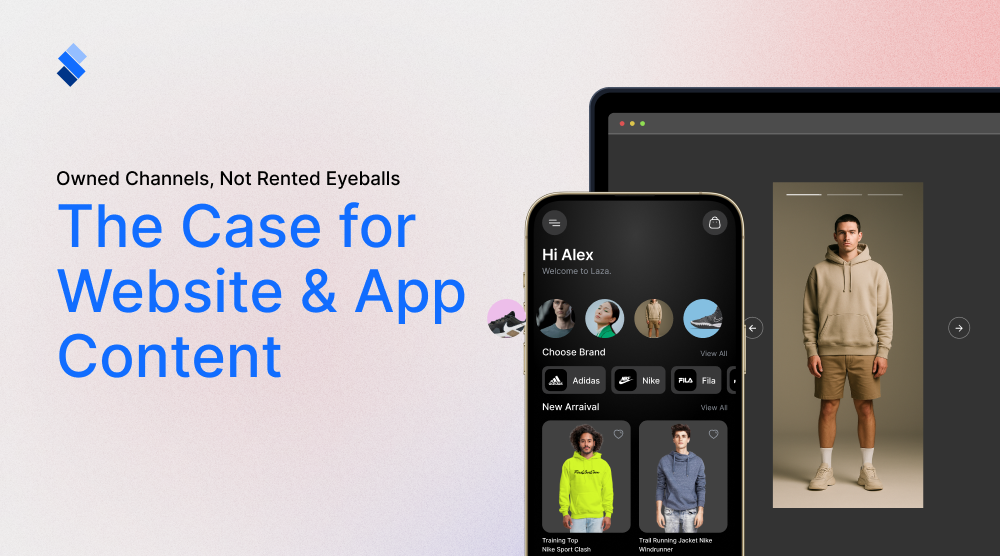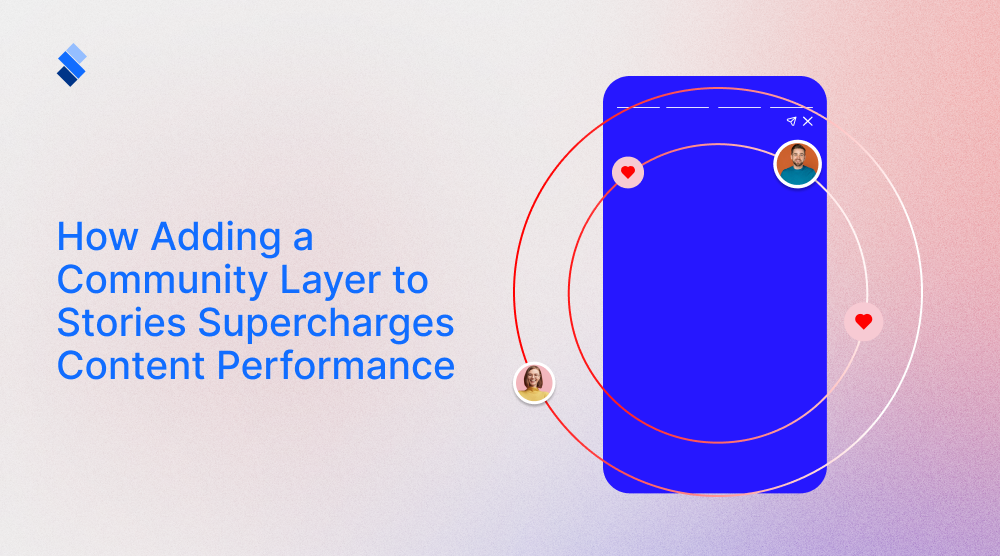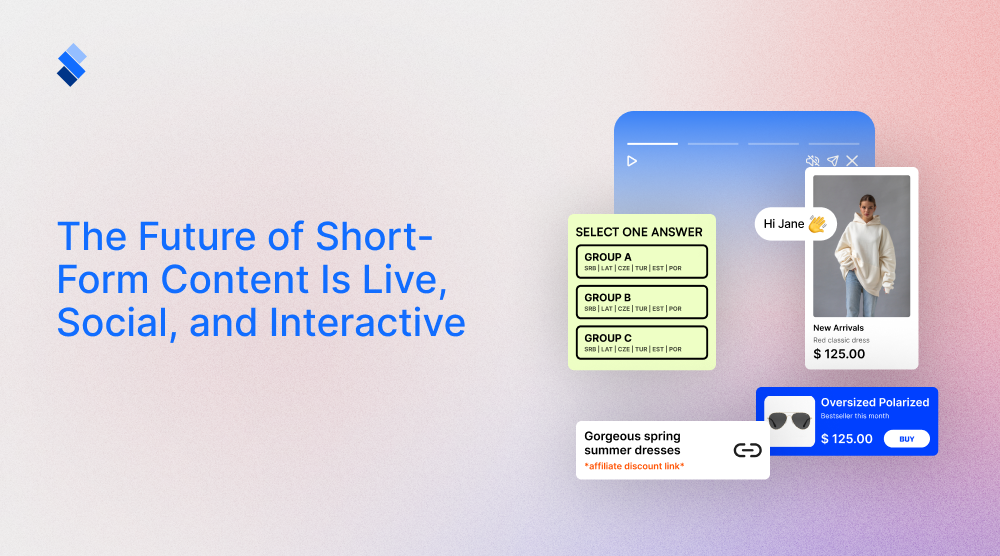Duolingo PLG: Increase user retention through gamification
There is a lot to learn from studying Duolingo PLG and how they used gamification to improve both user acquisition and user retention.

When you start studying marketing there are certain companies that you need to learn from. One is Coca-Cola, where constant marketing innovation helped make a simple drink a staple in the USA. Another is Stanley, where influencer marketing helped promote drinking cups to staggering success. For this article, we will focus on Duolingo, and how PLG and gamification helped it become such a well-known brand.
What is PLG
PLG stands for "Product-Led Growth." It's a growth strategy and business model where the product itself serves as the primary driver of customer acquisition, retention, and expansion. In a PLG approach, companies focus on building a product that is intuitive, easy to adopt, and provides value quickly to users. So, ideally, every company would use PLG. After all, it does seem like a vote of confidence where a company mainly trusts its product to promote the brand.

Now, of course, having a quality product that essentially markets itself is easier said than done. Firstly, you need to design the product so that it has easy and intuitive onboarding. A new user needs to be able to sign up and start using it with minimal friction. That way, users can typically explore and understand the product's value proposition without requiring assistance from sales or customer support.
Another common aspect of PLG is that you offer a freemium model of your app or a free trial period. Doing so allows users to experience the core features of the product before deciding to upgrade to a paid plan. If a user can review your product free of charge, they will be much for willing to opt for the paid version than if they had to pay for it from the start. In order to make this "free option" financially viable you also need to outline a scalable revenue model. In this model, you ought to outline how the growth in user numbers will impact the bottom-line product value. Apart from in-depth analytics, this may include tiered pricing plans, usage-based pricing, or additional premium features.
User-based growth
The main idea behind PLG is that you create a product that is easy to promote via word-of-mouth marketing. To make this possible, your product needs to have:
- Good customer reviews
- A free trial option
- Easy onboarding
Only with those three will it be easy for users to share and promote your product with friends and family. This is one of the reasons why user retention is so important for PLG products. If tackled properly, users will invite others to join the platform, collaborate with the product, or share their experiences with their networks. This leads to organic user acquisition and substantial expansion.

The crux of good PLG lies in a Customer-centric Approach. You need to the needs and preferences of your users, focusing on delivering value and solving their problems effectively. In the modern age where competition is apt, you need to use a customer-centric approach to foster better customer retention and acquisition, thus leading to increased customer lifetime value. You also need to gather customer data in order to continuously iterate and improve the product experience. You need to take into account user behavior, feedback, and usage patterns, in order to identify areas for optimization
Duolingo and PLG
All that we've outlined so far, Duolingo knocks out the park. Not only is Duolingo easy to explain, but it is also quite easy to install and start using. A person can learn pretty much all about Duolingo within the first 10 minutes of using it. Especially if a more experienced user (the one who recommended it) is by their side. This ease of use and relatively quick onboarding time took a lot of refinement in order to be what it is today. So, if you are looking for a great example of PLG, Duolingo is one of the best.
Of course, being easy to pick up is not the only advantage Duolingo has going on. If it were, it wouldn't be as successful with its PLG as it is. Instead, Duolingo has a great way of keeping people coming back to it on a daily basis. The way that it does that is through gamification.
How Duolingo uses gamification
We've already written about gamification and how effective it can be within the right app. So, in this article, we won't go into much debt. Just know that gamification is a development term used to describe the implementation of video game mechanics in an app. The benefits of doing so can be manyfold, especially if you have a decent understanding of how various gaming mechanics work, and why they might be suitable for you. So, to illustrate this, let's outline how Duolingo uses gamification, and what can you learn from it.
Achievement Badges
The first mechanism that Duolingo uses is achievement badges. If the users complete a lesson, reach certain milestones, or maintain a streak of consecutive days of practice, they will earn an achievement. These badges serve as tangible rewards for progress and encourage users to continue learning. Maintaining a streak of consecutive days is a great motivator to visit the app daily, thus increasing the retention rate for Duolingo.
XP Points
Once a user completes a task or an activity, they will earn Duolingo experience points (XP). This provides certain psychological benefits. Firstly, users can track their progress. By doing so, they will get further motivation to keep going and finish the course. Secondly, by having XP, users are able to compete with friends or other learners on leaderboards. This fosters a sense of accomplishment and friendly competition. And if a person is competitive by nature, it will be a big motivator to increase their XP as much as possible.
Progress Bars
Lessons in Duolingo are separated into levels. This enables users to keep track of where they are within a course. But, one of the things that Duolingo has realized is that a bit of visual aid can go a long way. In Duolingo, users can see their progress visually through progress bars that fill up as they complete lessons and advance through levels. This, relatively simple visual representation of progress goes a long way in keeping users motivated and focused on their language-learning goals.

Unlockable Content
It is an intuitive idea to help your users experience as much of your app as possible. But, in practice, it is not always so. Duolingo has long recognized that having too many available options can be overwhelming for users. This is why Duolingo uses a system where users must complete certain lessons or levels to unlock new content, such as advanced lessons or bonus skills. By doing so, Duolingo achieves a couple of things:
- Encouraging users to continue learning
- Creating a comfortable customer journey where users slowly learn both the app and the language.
- Providing users with a tangible sense of achievement as they unlock new material
- It gives them another thing they can monetize. If Duolingo chose so, they could easily open certain lessons or stages, for a price.
Challenges
Sometimes daily notifications, rewards, and challenges aren't enough to keep users motivated. Some need that extra motive to keep using your app. The way that Duolingo solved this is by occasionally offering challenges or events where users can compete with each other or work together towards a common goal. These challenges often have time limits and offer rewards to participants, further motivating users to engage with the platform.
Using gamification for user retention
Now we have a general idea of how Duolingo uses gamification to maintain their app as it is. So, should you simply copy their design? Of course not. Duolingo achieves what it does because they have a fairly unique platform and a dedicated audience. A lot of what Duolingo does works because they are a learning platform. This makes it quite natural to require users to visit daily and to lock certain segments. Therefore unless you run a learning platform, you likely won't see the same results by doing what Duolingo does.
Instead, you need to dig deeper and understand why these mechanics serve Duolingo as they do. Only by doing so can you actually use gamification to increase user retention and engage your users. Let's not outline a fairly general way in which you can conceive gamification for your brand.
Clear goals and progression
Provide users with clear goals and a sense of progression. Break down larger tasks into smaller, achievable milestones. Progress indicators, such as progress bars or levels, can show users how far they've come and what they need to do to reach the next level.
Rewards and incentives
Offer rewards and incentives to motivate users to engage with your product or service. This could include virtual rewards like badges or points, as well as tangible rewards such as discounts, access to exclusive content, or entry into sweepstakes or competitions.
Challenges and competitions
Create challenges and competitions that encourage users to compete with each other or work together towards a common goal. Leaderboards can showcase top performers and foster a sense of competition among users. Time-limited events can create a sense of urgency and excitement.

Feedback and Progress Tracking
Provide users with feedback on their progress and performance. Positive reinforcement, such as congratulatory messages or visual cues when users achieve a goal, can encourage continued engagement. Personalized feedback can help users understand their strengths and areas for improvement.
Social Interaction
Incorporate social features that allow users to connect with each other, compete, collaborate, and share their achievements. Social elements like friend leaderboards, challenges with friends, or user-generated content can enhance the sense of community and encourage users to stay engaged.
Customization and Personalization
Allow users to customize their experience and tailor it to their preferences. This could include customizable avatars, personalized learning paths, or the ability to choose which challenges or activities to participate in.
Surprise and Delight
Incorporate elements of surprise and delight to keep users engaged and excited. This could include unexpected rewards, hidden Easter eggs, or special events that occur randomly.
Is your company suited for gamification?
Determining whether a company is suitable for gamification involves evaluating several factors related to its products or services, target audience, goals, and resources. Here are some steps to help you assess the suitability of a company for gamification:
Understand the audience
Start by understanding your target audience. The whole purpose of gamification is to use different mechanics to engage your users. Therefore, if you don't understand them, you likely won't know which mechanics will work. Are they even going to respond positively to gamification elements? Consider factors such as age, interests, preferences, and gaming behavior. Gamification may be more effective for audiences that are already familiar with gaming or enjoy interactive experiences.
Identify goals and objectives
Gamification is a powerful approach, especially if you need to engage the right crowd. But, it cannot solve all your problems. To see whether your gamification efforts are fruitful, you'd be smart to outline goals and objectives. What specific outcomes are you hoping to achieve? Whether it's increasing user engagement, improving retention, driving sales, or promoting brand loyalty, aligning gamification strategies with business objectives is crucial for success. And you need to keep track of specific KPIs if you are to refine your gamification over time.
Evaluate products or services
Let's bring it back to the first thing that made Duolingo successful, which is having a decent product. Remember that Duolingo saw success from gamification because its product was able to market itself. Duolingo PLG did a lot of legwork that gamification simply picked up and grew upon. So, you'd be smart to assess the nature of your products or services. Are there elements that lend themselves well to gamification? For example, educational platforms, fitness apps, productivity tools, and e-commerce websites are often suitable candidates for gamification because they involve goal-setting, progress tracking, and user interaction. Furthermore, consider whether your product/service is developed enough so that gamification will actually help it.
Assess resources and capabilities
Gamification can be costly. Even if you have a decent product and a good idea of how to gamify it, you still need people to see it through. This includes programmers, designers, and production specialists. Keep in mind that gamification is an ongoing process where you need to test different mechanics and see which ones yield results. So, consider your resources, including budget, time, and expertise available for implementing gamification.
Analyze competitors and industry trends
If you are stumped about which mechanisms to implement, you can always start by researching competitors and industry trends. The more you know how they engage their viewers, the better. After a while, you'll be able to see if gamification is already being used successfully within your niche. And, if it is, which elements are mostly used? Analyze how competitors are implementing gamification and whether there are opportunities to differentiate by offering a unique gamified experience.
Final thoughts
To finish our article we would once again remind you to focus on product/service quality. Gamification is much easier once you have a good enough product to gamify. Meanwhile, don't expect that through gamification you can save a subpar product. If you wish to learn from Duolingo PLG, you'd first carefully optimise your product and use that period to study your audience. A good product will resonate with your audience. And, in turn, you'll be able to easily gamify your product to suit the audience you're researching.







